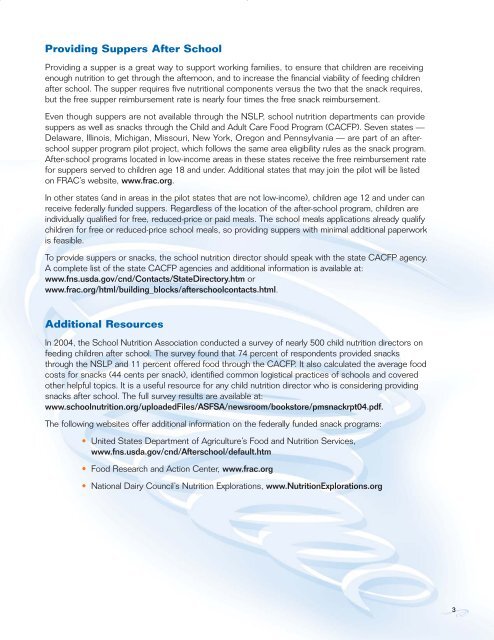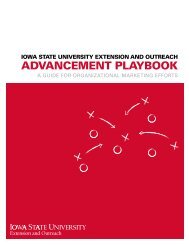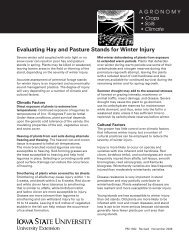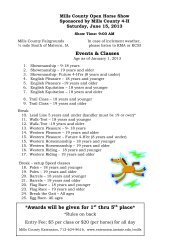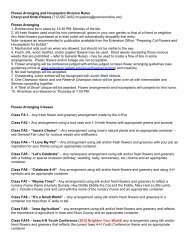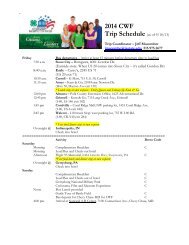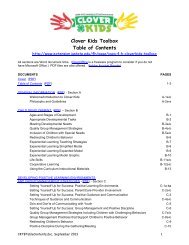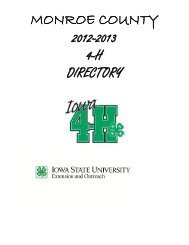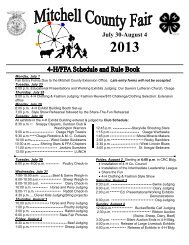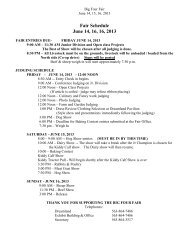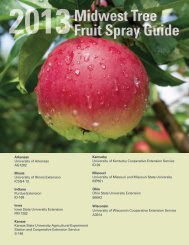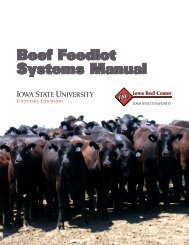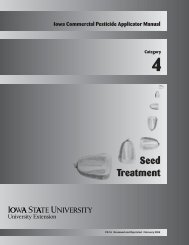Afterschool Snack Guide
Afterschool Snack Guide
Afterschool Snack Guide
You also want an ePaper? Increase the reach of your titles
YUMPU automatically turns print PDFs into web optimized ePapers that Google loves.
Providing Suppers After School<br />
Providing a supper is a great way to support working families, to ensure that children are receiving<br />
enough nutrition to get through the afternoon, and to increase the financial viability of feeding children<br />
after school. The supper requires five nutritional components versus the two that the snack requires,<br />
but the free supper reimbursement rate is nearly four times the free snack reimbursement.<br />
Even though suppers are not available through the NSLP, school nutrition departments can provide<br />
suppers as well as snacks through the Child and Adult Care Food Program (CACFP). Seven states —<br />
Delaware, Illinois, Michigan, Missouri, New York, Oregon and Pennsylvania — are part of an afterschool<br />
supper program pilot project, which follows the same area eligibility rules as the snack program.<br />
After-school programs located in low-income areas in these states receive the free reimbursement rate<br />
for suppers served to children age 18 and under. Additional states that may join the pilot will be listed<br />
on FRAC’s website, www.frac.org.<br />
In other states (and in areas in the pilot states that are not low-income), children age 12 and under can<br />
receive federally funded suppers. Regardless of the location of the after-school program, children are<br />
individually qualified for free, reduced-price or paid meals. The school meals applications already qualify<br />
children for free or reduced-price school meals, so providing suppers with minimal additional paperwork<br />
is feasible.<br />
To provide suppers or snacks, the school nutrition director should speak with the state CACFP agency.<br />
A complete list of the state CACFP agencies and additional information is available at:<br />
www.fns.usda.gov/cnd/Contacts/StateDirectory.htm or<br />
www.frac.org/html/building_blocks/afterschoolcontacts.html.<br />
Additional Resources<br />
In 2004, the School Nutrition Association conducted a survey of nearly 500 child nutrition directors on<br />
feeding children after school. The survey found that 74 percent of respondents provided snacks<br />
through the NSLP and 11 percent offered food through the CACFP. It also calculated the average food<br />
costs for snacks (44 cents per snack), identified common logistical practices of schools and covered<br />
other helpful topics. It is a useful resource for any child nutrition director who is considering providing<br />
snacks after school. The full survey results are available at:<br />
www.schoolnutrition.org/uploadedFiles/ASFSA/newsroom/bookstore/pmsnackrpt04.pdf.<br />
The following websites offer additional information on the federally funded snack programs:<br />
• United States Department of Agriculture’s Food and Nutrition Services,<br />
www.fns.usda.gov/cnd/<strong>Afterschool</strong>/default.htm<br />
• Food Research and Action Center, www.frac.org<br />
• National Dairy Council’s Nutrition Explorations, www.NutritionExplorations.org<br />
3


